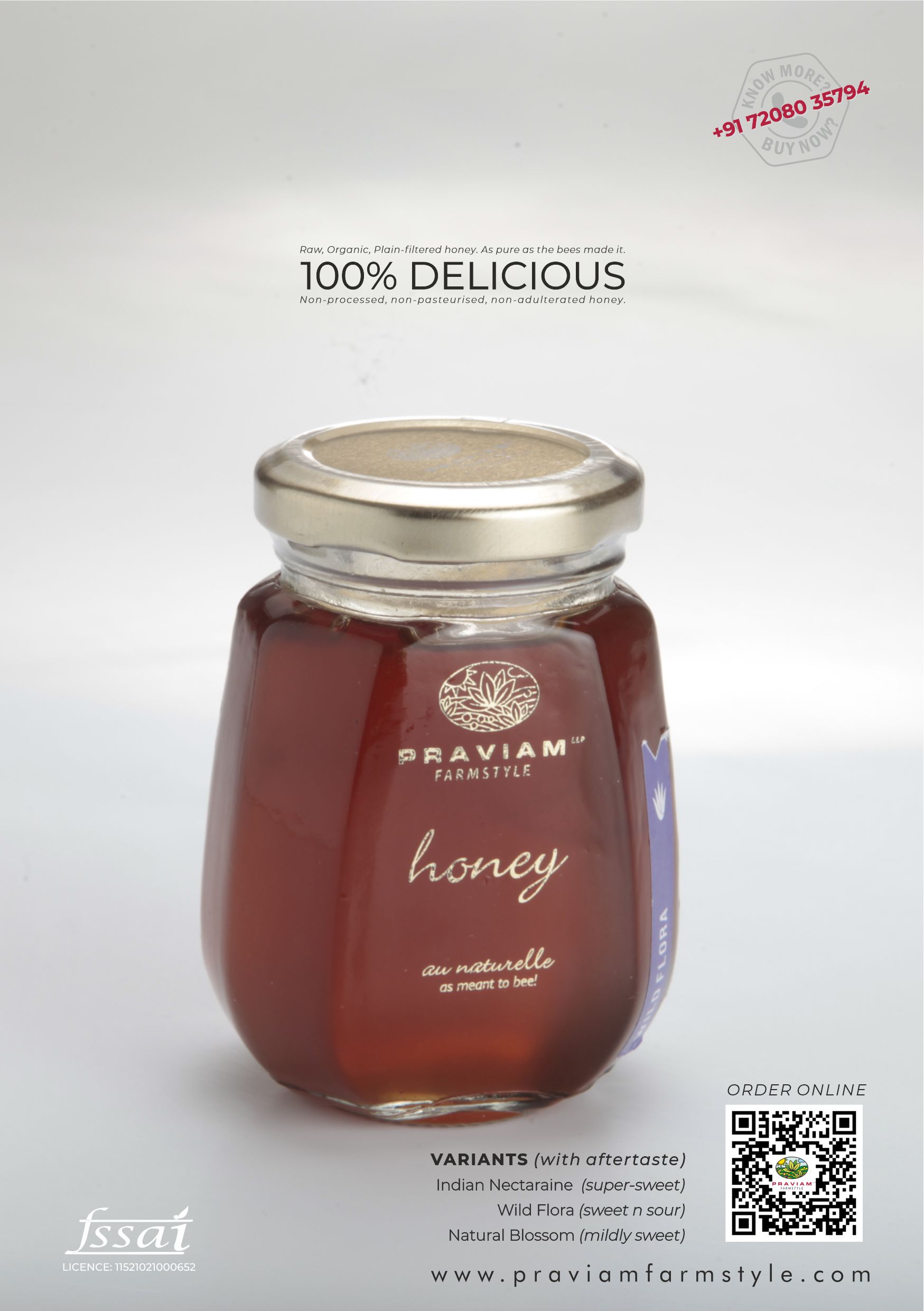Diety Jamun (blackberry) Honey
This is unifloral honey is derived from the nectary flowers of the Jamun Tree. This popular honey has a rich flavour and colour with fruity notes that change seasonally on storage.
Flowering starts during March and continues up April in Northern Indian conditions. Most of this honey is foraged from nearby Jamun trees. There are no known orchards and hence wild forests are the main source for this honey. The honey is harvested in early July upto Early August before the onset of rains.
As there are no large jamun orchards (in India) the volume of honey obtained is preciously low and seasonal.
Actually, I tasted it as a variant! But, I liked the taste and bought it. It has benefited me as I feel myself to be more healthy.
- David Mascarenas
(Mumbai, MH, IN)
Yes, Jamun honey is light amber (darker on aging) and definitely helps guts and intestines. In combination with Indian Nectaraine provides wholesome health benefits.
About Natural Blossom Honey
-
Floral Source : Uniflora
-
Pollen : mono-flora
-
Harvest Season : Early-Summer
-
Unheated : Yes
-
Free of Pesticides : Yes
-
Free of Antibiotics : Yes
-
Taste : Sour n Sweet
-
Colour : Light Brown
-
Location : Northern India
-
Recommended Usage : Medicinal Use. Eating as well as apply on wounds/bruises.
-
Suggested for : Blood, digestive, ulcers, menstruation issues.
- Dosage (medicinal use): 1-2 tsp/day.
- * Not to be fed to infants less than 13 months.*


Nulla blandit
Aat posuere sem accumsan nec. Sed non arcu non sem commodo ultricies. Sed non nisi viverra


Nulla blandit
Aat posuere sem accumsan nec. Sed non arcu non sem commodo ultricies. Sed non nisi viverra


Nulla blandit
Aat posuere sem accumsan nec. Sed non arcu non sem commodo ultricies. Sed non nisi viverra


Nulla blandit
Aat posuere sem accumsan nec. Sed non arcu non sem commodo ultricies. Sed non nisi viverra


Nulla blandit
Aat posuere sem accumsan nec. Sed non arcu non sem commodo ultricies. Sed non nisi viverra


Nulla blandit
Aat posuere sem accumsan nec. Sed non arcu non sem commodo ultricies. Sed non nisi viverra


Nulla blandit
Aat posuere sem accumsan nec. Sed non arcu non sem commodo ultricies. Sed non nisi viverra
